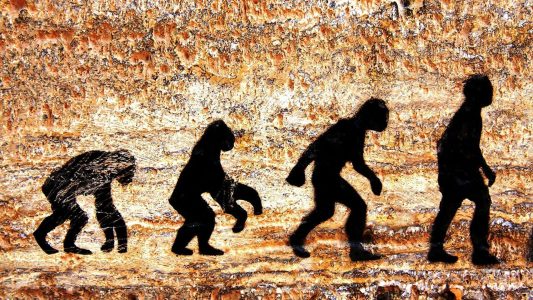8 Religious Claims Seen Through the Lens of Modern Science
2. The Great Flood

The story of a worldwide flood, commonly known as Noah’s Ark, is found in numerous ancient texts, including the Bible. Proponents of this belief argue that this event was a historical reality that reshaped the Earth’s surface.
However, geologists and archaeologists have found no evidence of a global flood occurring in the last six thousand years. Soil sediments, ice core samples, and dendrochronology (the study of tree rings) provide clear, uninterrupted records extending well beyond this timeframe.
The myth of a global flood endures partly due to its dramatic narrative appeal and its thematic use in teaching moral lessons. Psychological factors also play a role, as such epic tales often provide a sense of shared history and moral order that can be comforting.
Additionally, localized floods in ancient times may have been exaggerated into tales of global scale, passed down through generations, and become ingrained in cultural and religious lore.
3. Evolution vs. Creationism

The theory of evolution by natural selection, first proposed by Charles Darwin, is one of the most solid theories in modern science. It is supported by a vast array of evidence from genetics, paleontology, and comparative anatomy.
This evidence shows that life on Earth has evolved over billions of years, with species continually adapting and diversifying through natural processes.
Despite the scientific backing for evolution, creationism—which posits that life on Earth was created by a divine being in a more or less present form—remains prevalent.
This belief is particularly strong in regions with high religiosity, where religious education and values are emphasized over scientific perspectives. The resistance to evolutionary biology is often rooted in concerns that accepting such views might undermine moral and religious foundations.
4. Miracles

Miracles, defined as supernatural interventions in the natural world, are a common element in many religions. Scientifically, events claimed as miracles often lack verifiable evidence and do not hold up under empirical investigation.
Advances in medicine, physics, and psychology have provided natural explanations for many events previously considered miraculous.
Belief in miracles persists largely because they address deep emotional and existential desires for hope and meaning in challenging times. Miracles also reinforce the faith of believers, serving as both spiritual assurance and a means to foster a sense of community among followers.
The personal and subjective nature of many miracle claims makes them less amenable to scientific scrutiny, allowing these beliefs to persist even in an age of science.
5. The Flat Earth
The belief that the Earth is flat, despite being an ancient view, still finds pockets of support in modern society. This notion is directly contradicted by centuries of scientific evidence, including satellite images, space exploration, and the principles of physics.
The curvature of the Earth is observable in numerous ways, from the way ships disappear hull-first over the horizon to the differing star constellations visible from various latitudes.
The persistence of the flat Earth belief can often be attributed to conspiracy thinking and distrust of scientific authorities and institutions. For some, adhering to a flat Earth theory is also a form of social or cultural dissent against mainstream scientific views, serving as a rallying point for communities who feel marginalized or skeptical of the official narratives.
6. The Sun Revolves Around the Earth

The heliocentric model, which states that the Earth and other planets orbit the sun, is a foundational concept of modern astronomy, established by the observations of Copernicus and Galileo. Despite this, some religious groups historically endorsed the geocentric model, which places the Earth at the center of the universe, based on their interpretations of religious texts.
While virtually all contemporary scientific communities support heliocentrism, there are still individuals who cling to geocentric views for religious reasons. This belief is largely marginalized but persists in very small circles, often tied to literal interpretations of scripture written before the scientific revolution.
7. Intercessory Prayer Affects Physical Change

Scientists have studied intercessory prayer, the practice of praying for others’ welfare, to determine if it can have a measurable effect on health outcomes. Large-scale studies, including randomized controlled trials, have generally found no reliable evidence that intercessory prayer impacts medical recovery or physical health in a way that exceeds chance or the placebo effect.
Despite the lack of scientific evidence supporting the efficacy of intercessory prayer in affecting physical change, many people continue to believe in its power. This belief is often rooted in personal experiences or anecdotal accounts, which are powerful motivators.
For many, prayer is less about the direct influence on physical reality and more about the comfort, community, and emotional support it provides.
8. Demonic Possession Causes Illness

The belief that demons or evil spirits can possess individuals and cause physical or mental illness is ancient and still present in many cultures. Modern medicine and psychology, however, have provided explanations for symptoms that were once attributed to possession, such as epilepsy, schizophrenia, and bipolar disorder, identifying them as medical conditions that can be treated with medication and therapy.
Despite medical advances, the belief in demonic possession persists, particularly in areas where traditional beliefs are strongly integrated into the community’s cultural identity.
In some cases, psychological phenomena or medical symptoms are interpreted through religious lenses, blending the line between spiritual and medical care. This underscores the significant role that cultural context plays in how health and illness are understood and treated.
Looking at Both Sides

The dialogue between science and religion is complex and multifaceted. While science provides a framework for understanding the natural world through evidence and observation, religion addresses the spiritual, moral, and existential questions of human life.
Both realms offer valuable insights, but when it comes to specific claims about the physical world, science often offers a clearer picture based on evidence and investigation. As our understanding of the world continues to evolve, so too will the conversations at the intersection of science and spirituality.




